
Hello,
In this article, we are going to discuss the series of dust and gas sensors.
It is essential for some projects to detect various kinds of poisonous and polluting gases in our environment. There is a whole series of gas sensors that help in detecting various kinds of different gases. Moreover, these sensors are compatible with Arduino which make them perfect for a wide range of Arduino projects.
Gas sensors are electronic components that can easily detect different kinds of gases. The series of gas sensors compatible with Arduino is called the MQ series. The most commonly used sensor from this series is the MQ2 Gas sensor. This is because the MQ2 can detect a wide variety of useful gases and can be used in projects like gas leak systems etc. They are generally used with a buzzer or alarm of some kind. Below you will find the list of MQ sensors that are available to use with the Arduino and the gases it can detect.
- MQ-2: Methane, Butane, LPG, Smoke.
- MQ-3: Alcohol, Ethanol, Smoke.
- MQ-4: Methane, CNG.
- MQ-5: Natural gas, LPG.
- MQ-6: LPG, Butane gas.
- MQ-7: Carbon monoxide gas.
- MQ-8: Hydrogen gas.
- MQ-9: Carbon monoxide, flammable gases.
- MQ131: Ozone.
- MQ135: Carbon monoxide, Benzene, Ammonia, Alcohol, Smoke.
- MQ136: Hydrogen Sulfide.
- MQ137: Ammonia.
- MQ138: Benzene, Toluene, Alcohol, Acetone, Propane, Formaldehyde, Hydrogen.
- MQ214: Methane, Natural gas.
When measuring gases, the concentration of such gases is measured by the amount of gas by volume in the air. The most common units of measurement for this are parts-per-million and percentage concentration. For instance, if the concentration of CO gas in an environment is 1000 ppm, then there are 1000 molecules of CO gas in one million molecules of air.
MQ-2 Gas Sensor
The MQ2 Sensor is the most commonly used sensor in the MQ Series of sensors. It is suitable for detecting hydrogen, LPG, methane, carbon monoxide, alcohol, smoke, or propane. The versatility of this sensor is the reason it is the most commonly used for projects where smoke or any other kind of gas is to be detected. There is a potentiometer located at the back of the sensor which can be adjusted to set the threshold sensitivity for the sensor. Some of its features are:
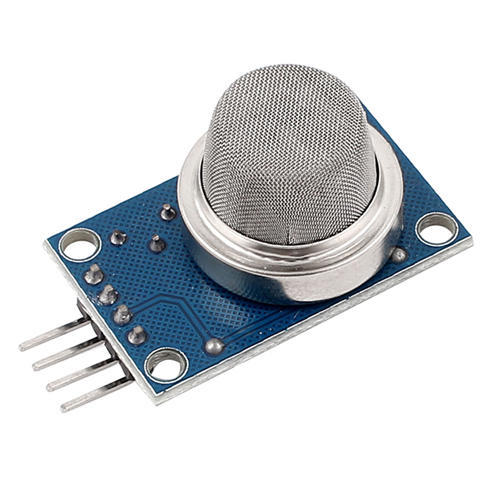
- Long lifetime and stable outputs
- Wide detection scope
- High sensitivity and fast response time
MQ-3 Gas sensor
As the MQ3 Sensor can detect a wide variety of gases, it is generally used for gas detection purposes. It can be used to detect various gases like Alcohol, Benzene, Methane, Hexane, LPG, and carbon monoxide. This sensor also provides a fast response time and high sensitivity. The sensitivity of this sensor can be adjusted by adjusting the potentiometer provided on the back of the sensor. The output voltage of the sensor depends directly on the concentration of the gas being detected. This means that as the concentration of the gas increases, the output voltage of the sensor increases with it. Some of the features of this sensor are:
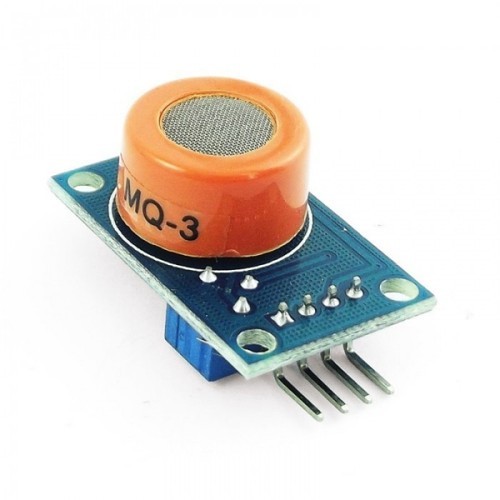
- Fast response time and high sensitivity.
- Stable output and long lifetime
- Highly sensitive to alcohol but low sensitivity to benzene
MQ-4 Gas Sensor
The MQ4 sensor is also called the natural gas sensor as it mainly detects natural gases. This is a fast and reliable sensor with high sensitivity towards natural gases and methane. This sensor has a long life and is very economical. There are two LED lights on this sensor which act as the output for this sensor. A GREEN LED is used to indicate that the gas concentration is below the critical value. And a RED LED is used to indicate that the gas concentration has exceeded the critical value. Some of the features of this sensor are:
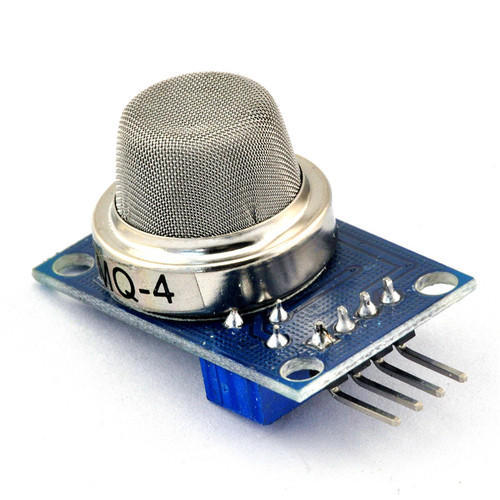
- High sensitivity to methane and other natural gases.
- Low sensitivity to alcohol and smoke.
- Fast and stable response.
- Long shelf life.
- Simple drive circuit.
MQ-5 Gas Sensor
The MQ5 Sensor is same as the other sensors of the series. It detects hydrogen, LPG, methane, carbon monoxide and alcohol. It provides fast response time and high sensitivity. The sensitivity of this sensor can be changed by adjusting the potentiometer provided on the back of the sensor. Some of the features of this particular sensors are:
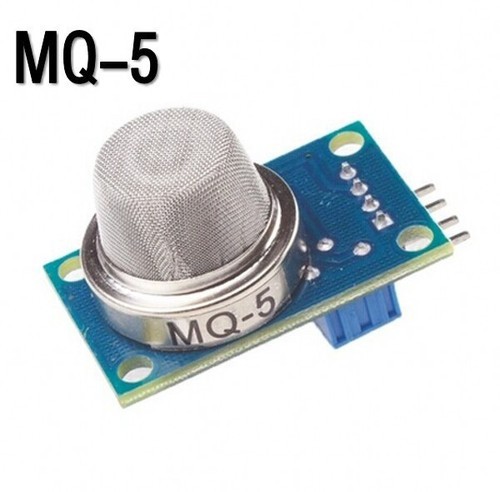
- Operating Voltage: 5V
- Concentration detection range: 200-10000 ppm for LPG, LNG, Natural gas, iso-butane.
- It provides both digital and analog output.
- Digital output is either high or low based on the threshold value.
MQ-6 Gas Sensor
The MQ6 Sensor is used in the sensing of Liquified petroleum gas in the air. As all the other MQ sensors, this sensor also provides a fast response time and high sensitivity. It can detect concentration ranging from 100 to 10000 ppm. The output of this sensor is analog. All you need to do is connect the output pin to an analog pin on the Arduino and connect the power pin to 5V. Some of the features of this sensor are:
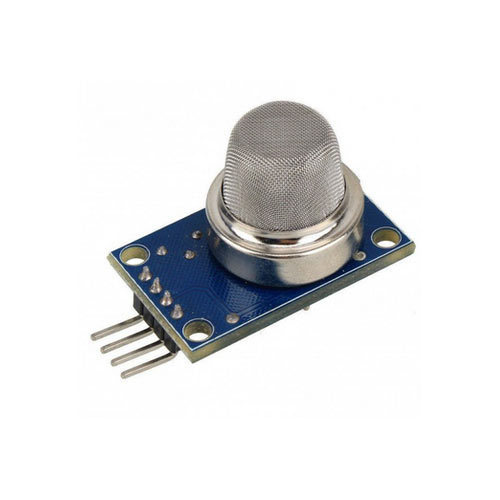
- Operating voltage: 5V
- High sensitivity to iso-butane, propane and LPG gas
- Fast response time
- Less sensitivity to alcohol and smoke
- Detection range of 100-10000 ppm
MQ-7 Gas Sensor
The MQ7 gas sensor is mainly used to detect carbon monoxide gas in the atmosphere. The sensing element in this sensor is SnO2, The detection of gas is done with the help of high and low temperature cycles. When the temperature is low, it detects the CO gas. When the temperature is high, it cleans all the other gases which are absorbed during the low temperature phase. Some of the features of this sensor are:
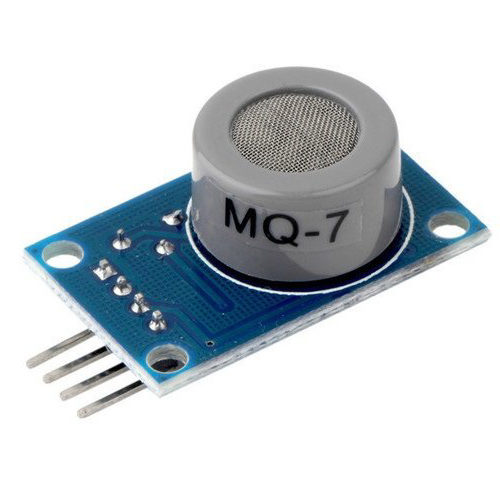
- It provides great sensitivity to combustible gases.
- It also provides high sensitivity to natural gases.
- It has a very low cost.
- It has a very long life.
MQ-8 Gas Sensor
The MQ8 sensor is used to measure Hydrogen gas concentration in the atmosphere. This sensor is suitable of measuring concentrations ranging from 100-10000 ppm. This sensor is designed in such a way that it has a long life and provides stable output. The MQ8 Sensor is ideal for projects involving detecting hydrogen gas leakages. Some of the features of this sensor are:
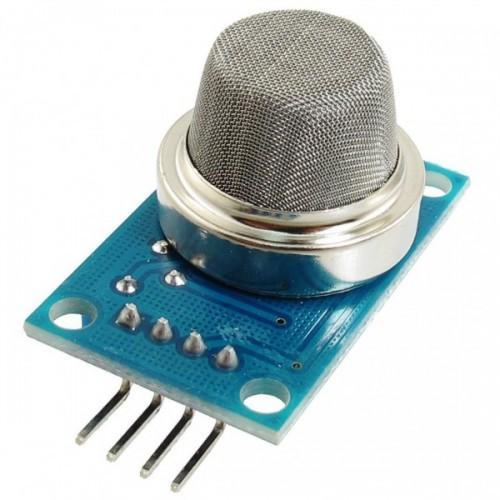
- High Sensitivity to hydrogen.
- Provides stable output and long life.
- Detection range of 100-10000 rpm.
- Operating Voltage: 5V
MQ-9 Gas Sensor
The MQ9 gas sensor has a high sensitivity towards carbon monoxide and other flammable gases like methane and LPG. The sensing element in this sensor is similar to that of the MQ7 sensor. The sensing element is SnO2. The detection of gas is done with the help of high and low temperature cycles. When the temperature is low, it detects the CO gas. When the temperature is high, it detects methane, propane and other combustible gases and it cleans all the other gases which are absorbed during the low temperature phase. MQ9 sensor is generally used in domestic gas leakage detectors. Some of the features of this sensor are:
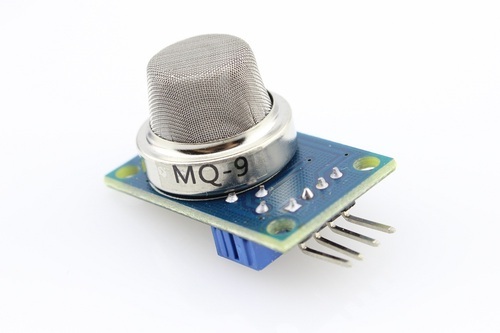
- Operating Voltage: 5V
- Good sensitivity to carbon monoxide and other combustible gases.
- It has a long life and is low cost.
MQ-131 Gas sensor
The MQ131 gas sensor is used mainly to detect ozone gas in the atmosphere. The working principle of this sensor is the same as the MQ9 and MQ7 sensors. The sensing element is SnO2. When the temperature of the sensing element is low, it detects the ozone gas. When the temperature is high, it cleans all the other absorbed gases. The sensor’s conductivity increases with increase in the concentration of ozone. MQ131 is highly sensitive to ozone gas but is also sensitive to gases like CL2, NO2 etc. Some of the features of MQ-131 sensor are:
- Good sensitivity to ozone.
- Long shelf life and very economical
- Also good sensitivity to gases like CL2, NO2.
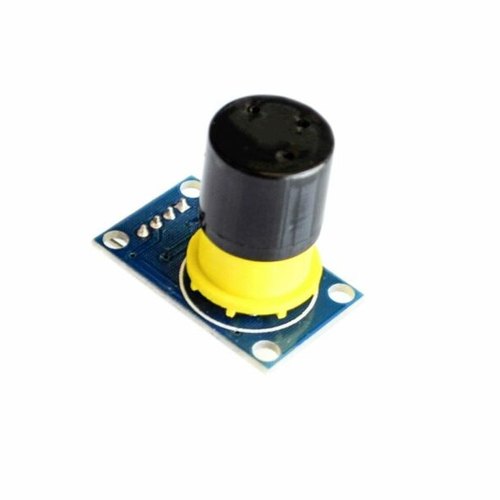
MQ-135 Gas Sensor
MQ135 is and all-rounder when it comes to the detection of gases. It can detect a wide variety of gases such as NH3, NOx, alcohol, benzene, smoke and CO2. For such particular reasons, this sensor is also called the air quality sensor. MQ135 is highly sensitive to ammonia, sulfide, smoke and other harmful gases. It is very economical and particularly suited for air quality monitoring applications. Some of its features include:
- High sensitivity to gases like ammonia, sulfide, smoke and other harmful gases.
- Detection range of 10- 300 ppm for ammonia and alcohol, 10-1000 ppm for benzene.
- Long life and low cost.
- Stable output.
MQ-136 Gas Sensor
The MQ136 Gas sensor targets hydrogen sulfide gas. The working principle of this sensor is the same as other sensors. The sensing element is made up of SnO2. It works in cycles of low and high temperatures. During the low temperature, it detects the target gas. During the high temperature phase, it cleans all the other absorbed gases. It has high sensitivity for hydrogen sulfide gas and low sensitivity for other combustible gases. Some of its features are:
- Good sensitivity for hydrogen sulfide.
- Long life and economical.
- Low sensitivity for other combustible gases.
MQ-137 Gas Sensor
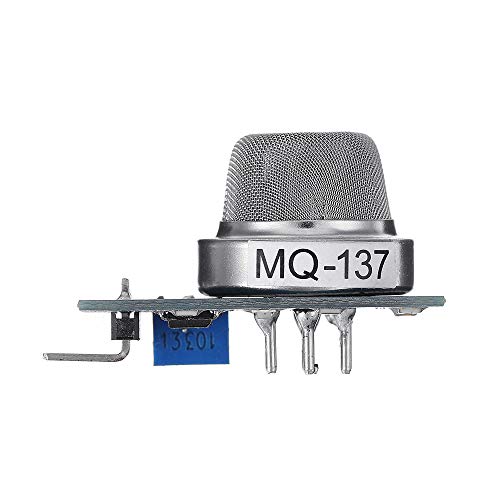
MQ-138 Gas Sensor
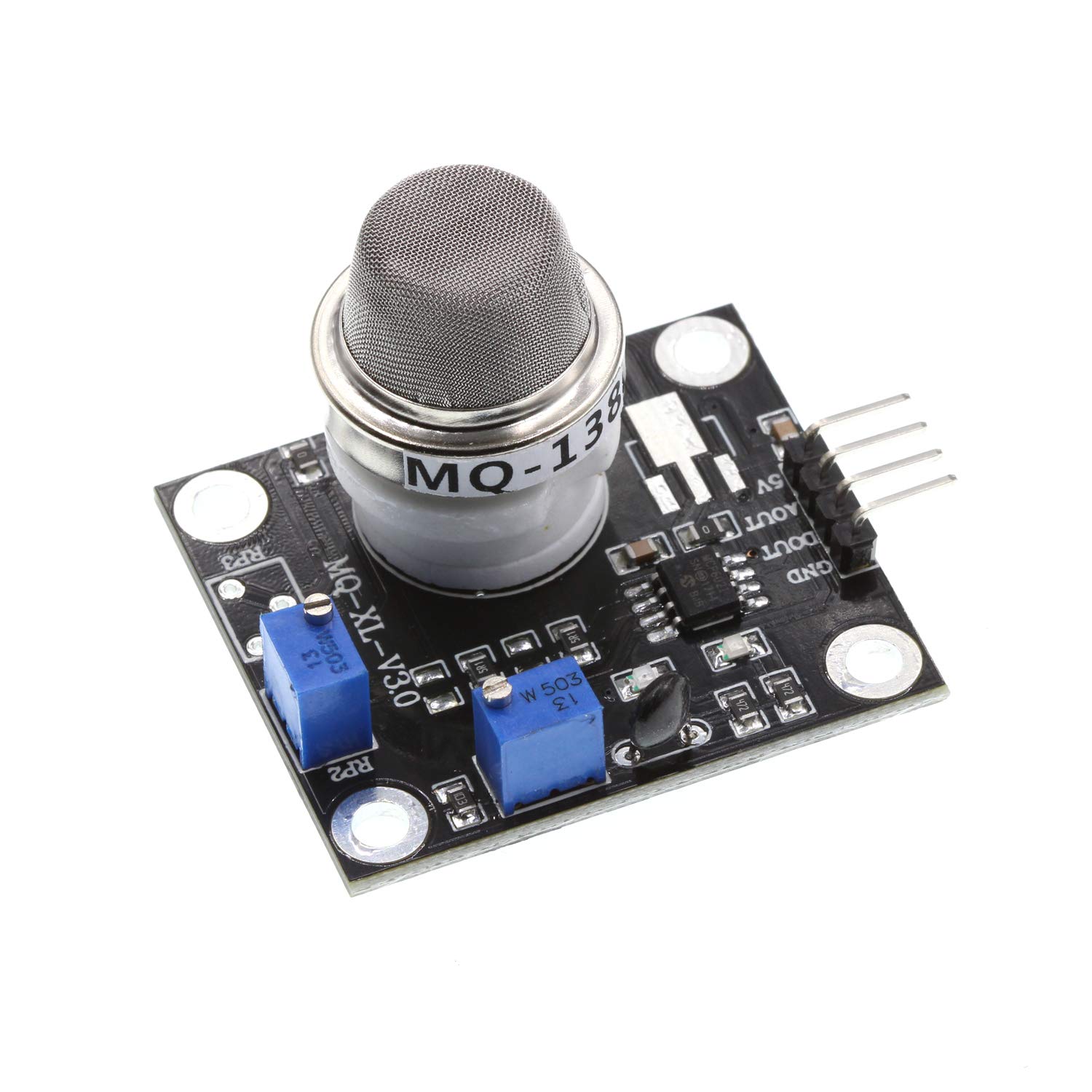
MQ-214 Gas Sensor
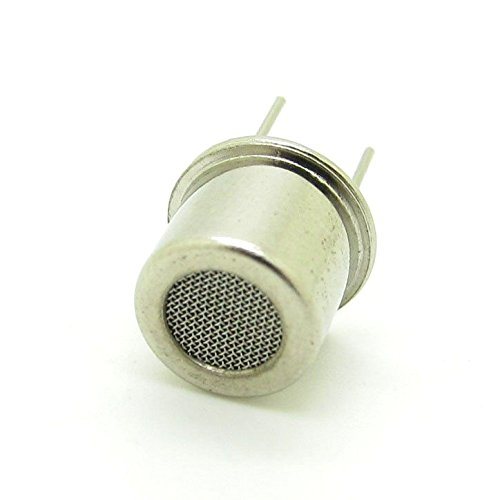


Leave a Comment